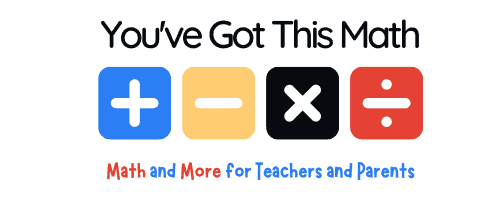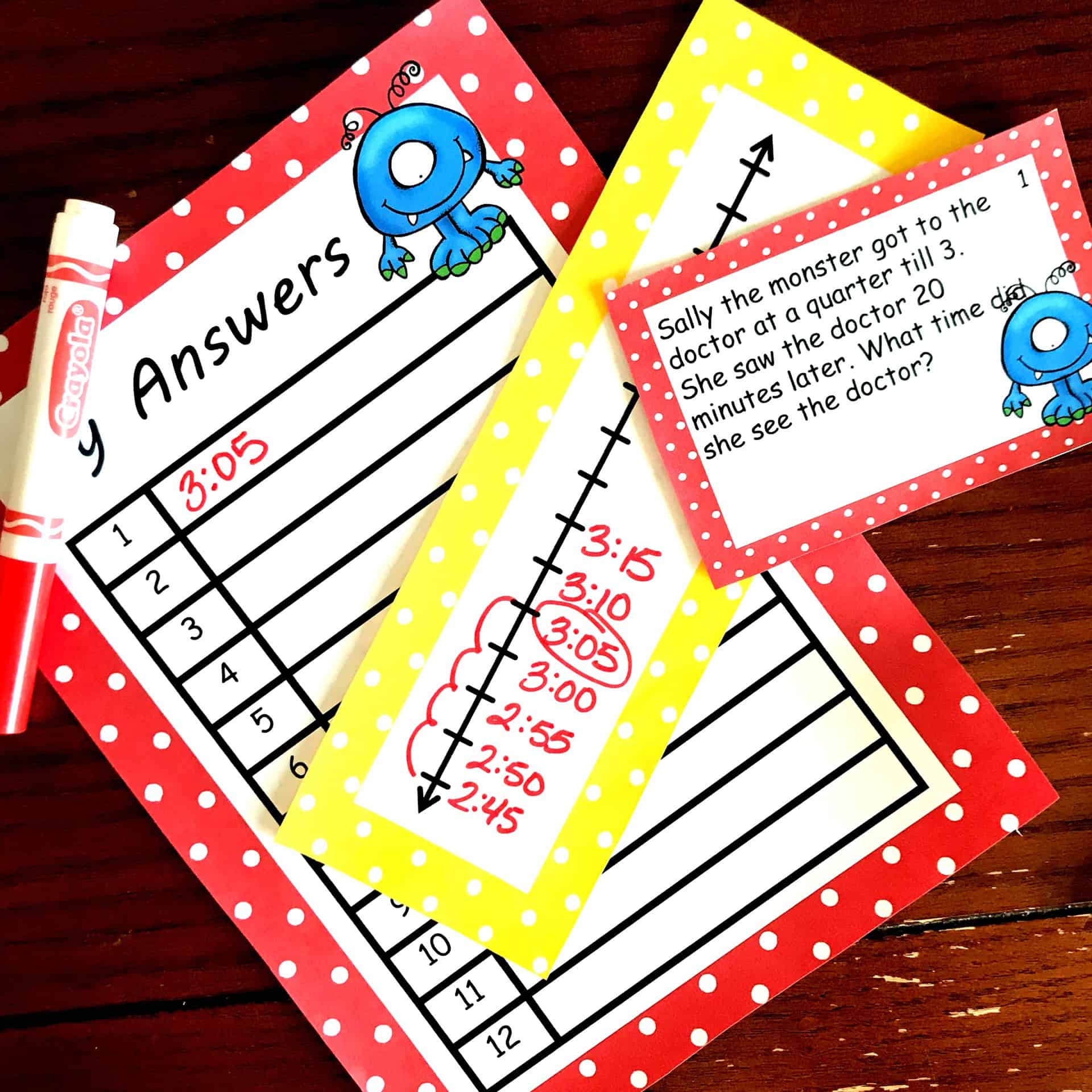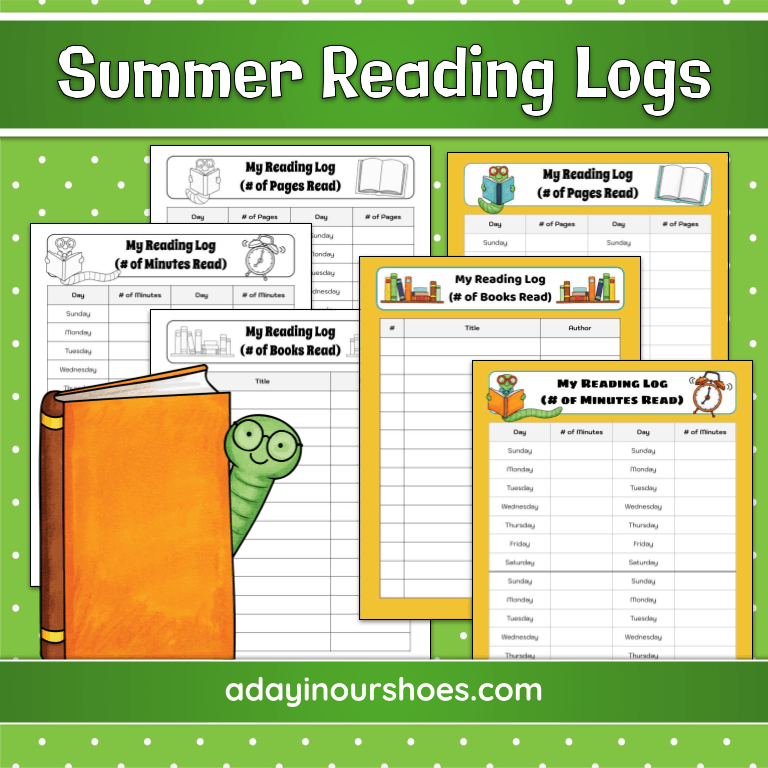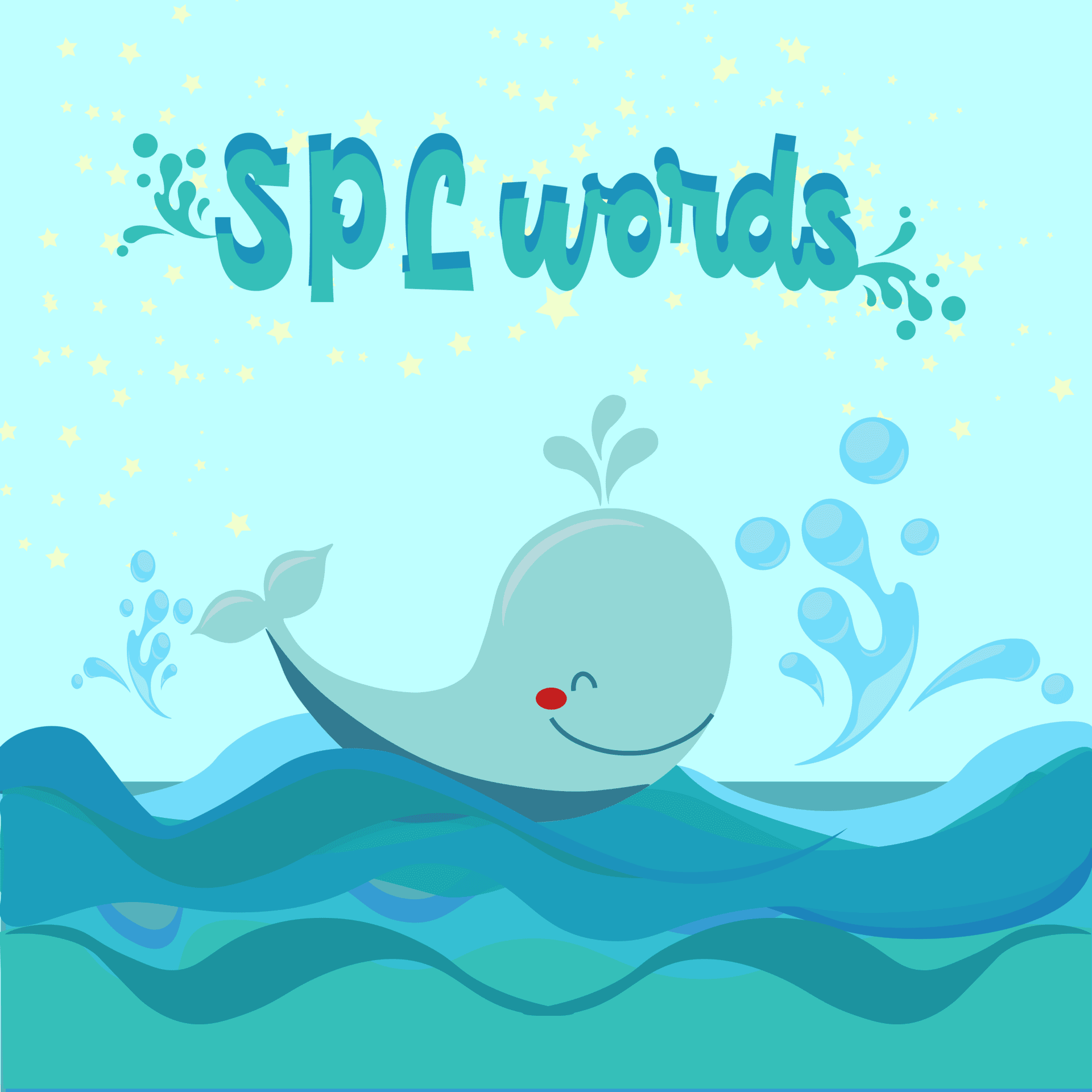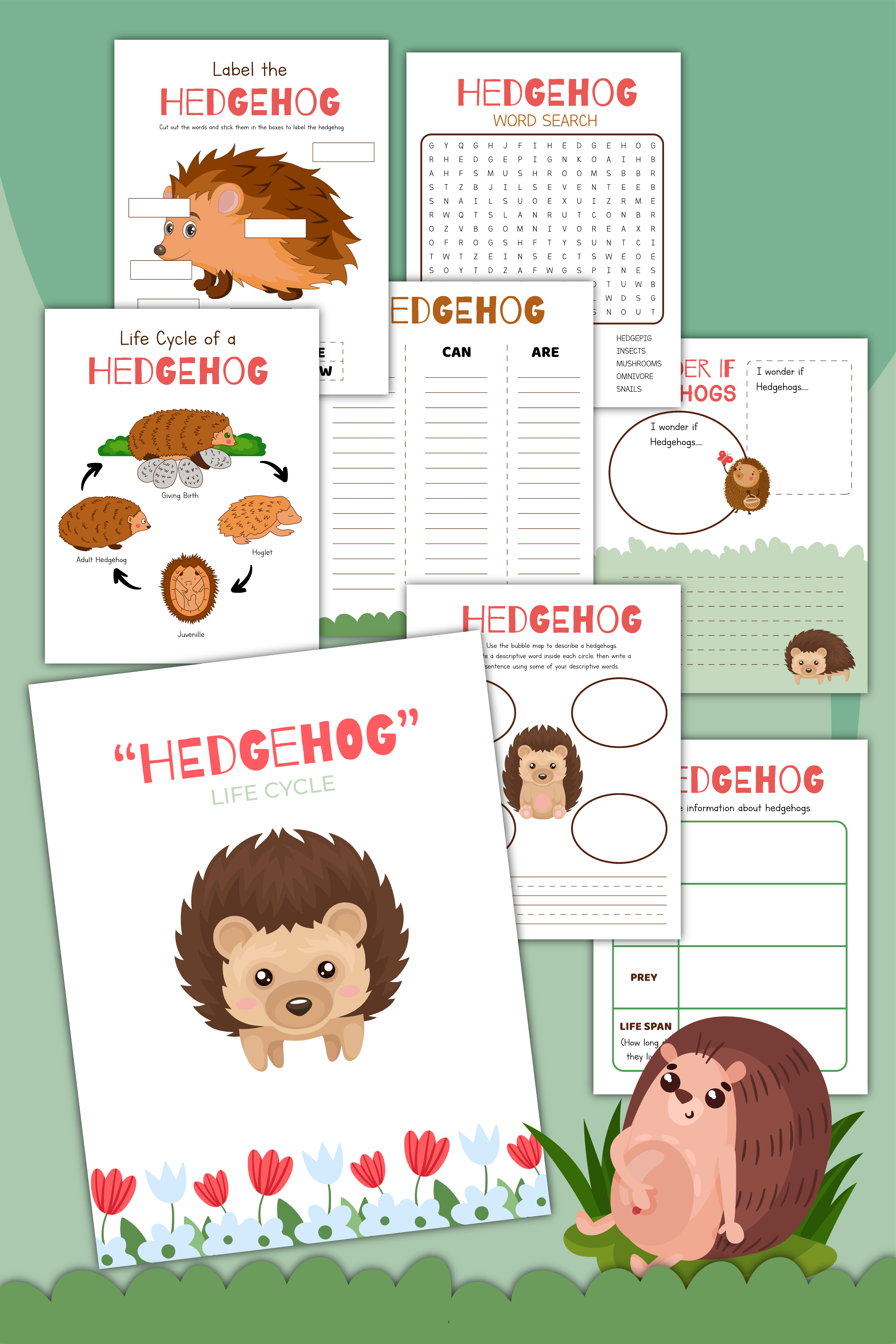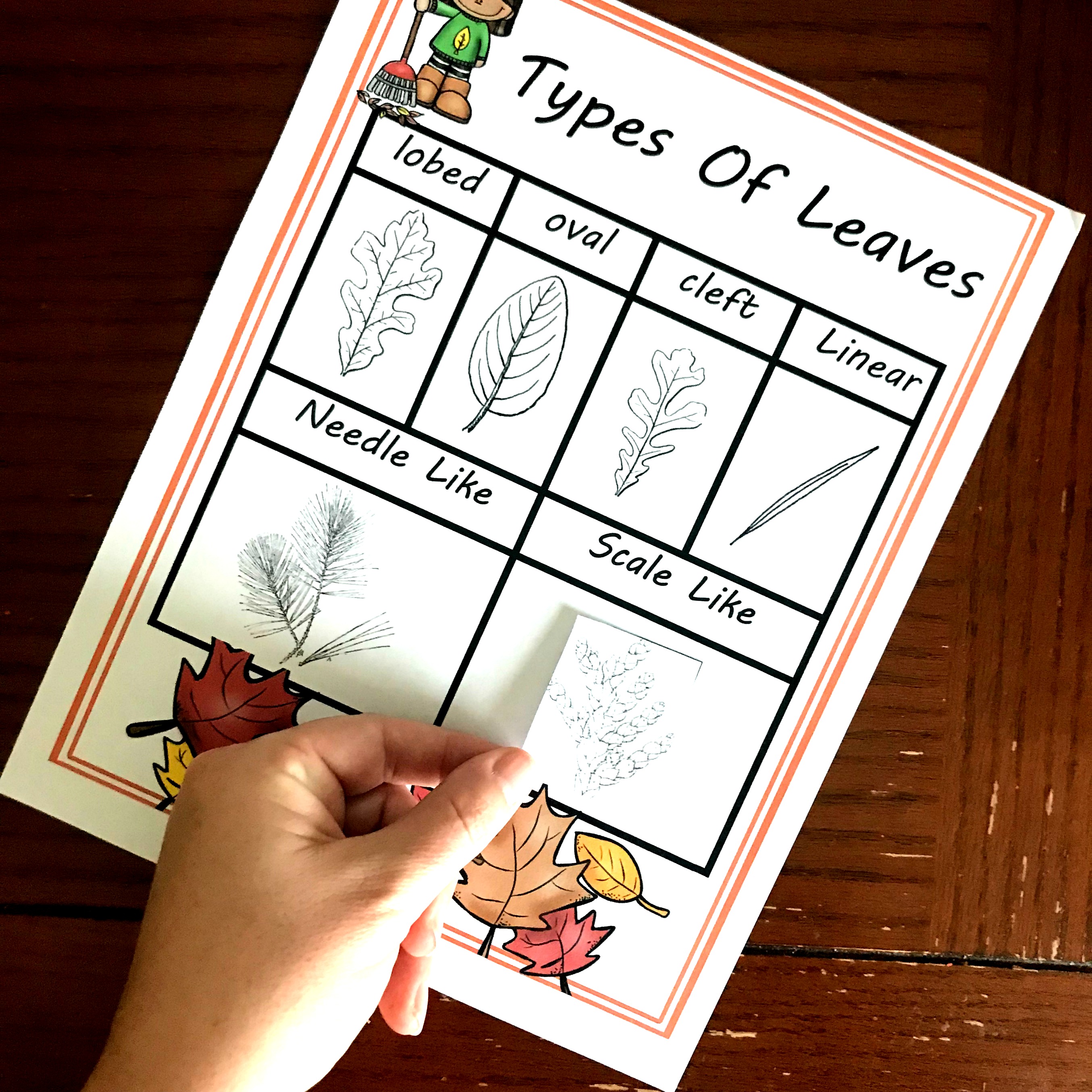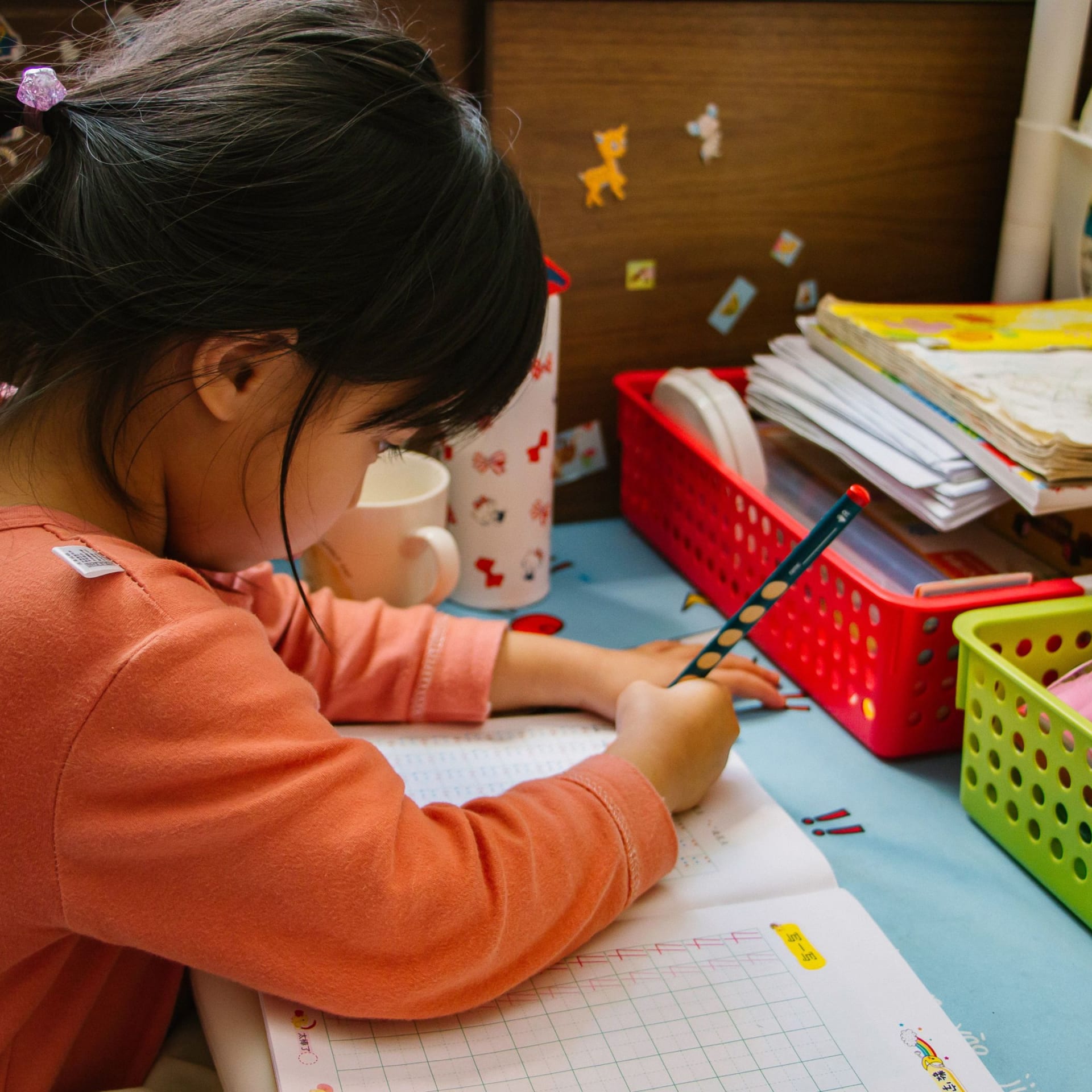5 Fun Activities for Living Vs Non Living Unit | Free Printable
Living vs Non Living
Get a free game and sorting cards to assist you in teaching your living vs non living unit. There are other activities, such as emergent readers available too.
“Oh, that fruit is cut open. It can’t be a living thing.” my kindergartener said as he meticulously covered up the green kiwi.
Legos were scattered across the table, and my boys were in competition mode. My oldest held his breath while C reached over to grab a card to replace the kiwi he had just used.
“Don’t grab a mouse. Not a mouse,” N whispered. He knew that the game would be over if that card appeared in C’s pile.
“Ahhhh,” sighed C as he glanced at his card. “Not a mouse.”
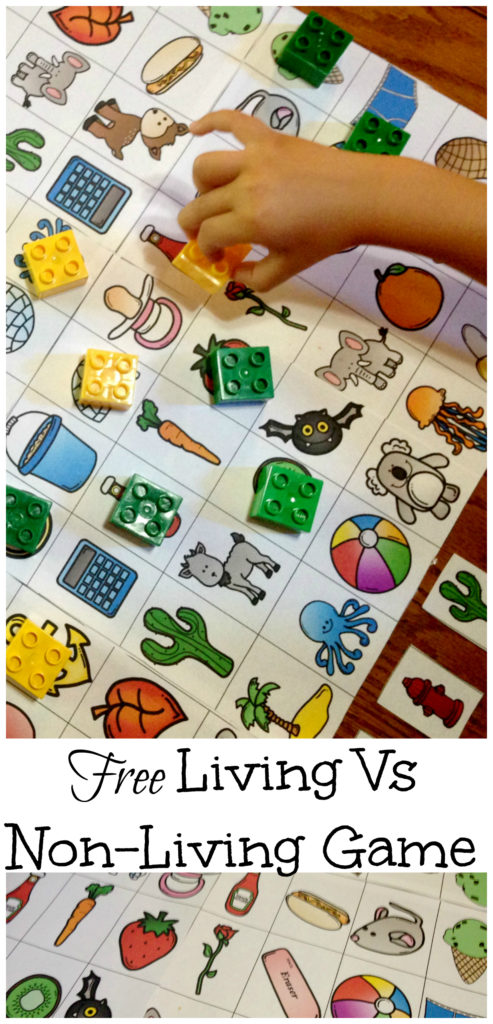
N bounced in his chair, not able to contain his excitement or his overabundance of energy. He started to place his piece on the board, but I stopped him eager to go into a little more depth with C.
“Why can’t the kiwi be a living thing if it is cut open?” I asked.
C thought for just a second with his typical ummmmmm, and then responded, “Well it is not on the vine. It can’t get food or water. All living things have to have food and water.”
A smile broke out on both of our faces, and we gave each other a high five.
Yep, our science unit was successful this week. My C understands living vs non-living things.
Five Characteristics of Living Things
There are five main characteristics that describe living things.
- Living Things Breathe
- Living Things Grow
- Living Things Move
- Living Things Reproduce
- Living Things Need Food and Water
Each day we focused on one characteristic, doing numerous activities with it. Though the activities didn’t change much each day, the focus did and both boys stayed engaged throughout the week.
Living vs Non Living Book
Our week started off with us enjoying the book What’s Alive. The bright, colorful book engages the reader and all the kiddos enjoyed it. We referred back to it as we learned more specific characteristics.
The Gift of Curiosity has a wonderful list of living vs non-living things books you can add to your reading list.
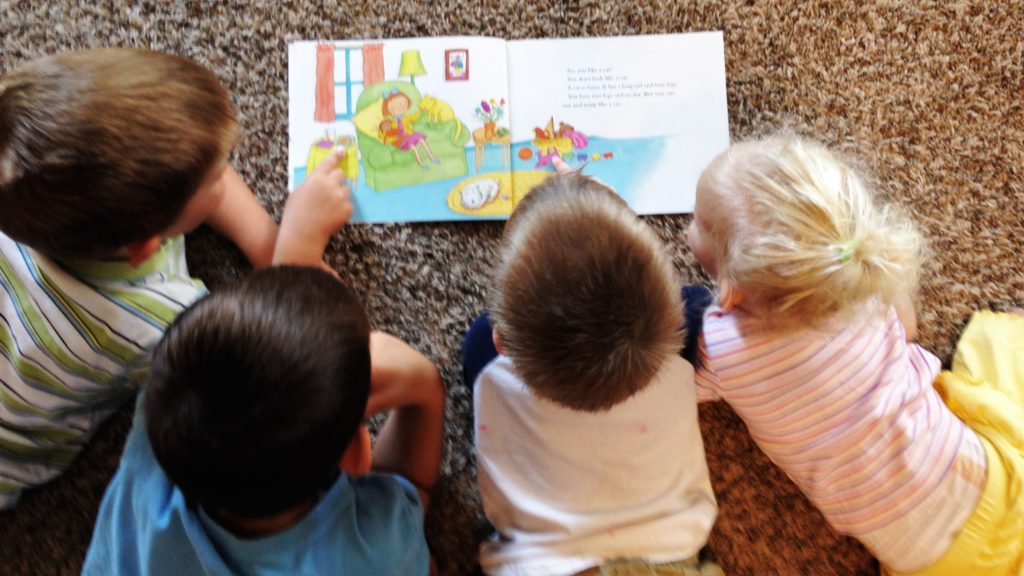
Living vs Non-Living Sight Word Game
We began each morning playing this simple game. The boys took turns rolling the die and moving around the board saying the sight words as they landed on them.
To add a little excitement, there were pictures of living and non-living things on the board. If you landed on a non-living thing you had to roll again and move backward that many spaces.
Of course, as they moved backward they were saying each sight word. If they landed on a living thing, they got to roll again and move forward. C, N, and I enjoyed playing, and it set C up for the next step.
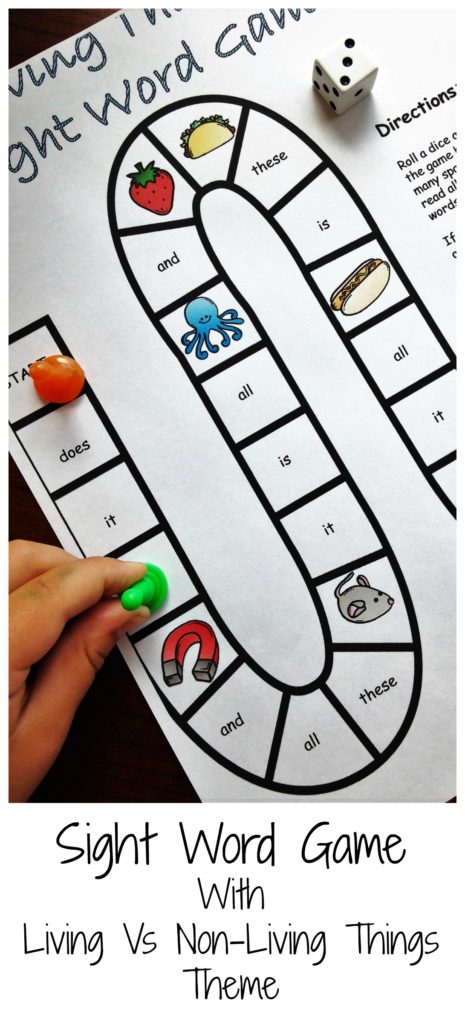
Living Things Emergent Reader
Each day, my kindergartener received an emergent reader to color and read. All five of them are very similar and use many of the sight words that we practiced during the sight word game.
The difference is that each book focused on a different characteristic of living things.
I required my little guy to read them to me, and then to his 1st-grade brother. Emergent readers no longer work for N, but I wanted him to hear the characteristics too.
So why not have him be a good big brother and listen to his brother read.
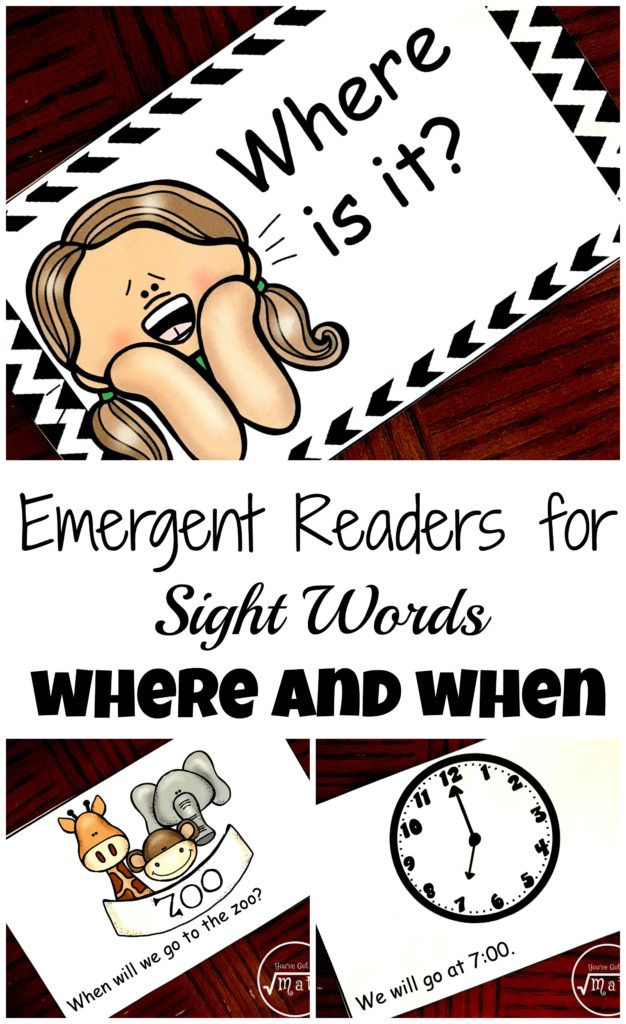
Living vs Non-Living Sorting Activity
After reading the living vs non-living emergent readers, we began a sorting activity. I would write the living characteristic we had just read about on one paper, and the non-living characteristics on the other.
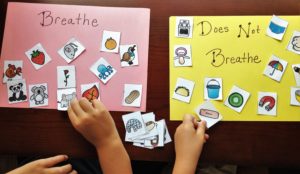
The boys would then sort the pictures onto the two papers. The pictures will be used for the game later in the week, so it was a great way to prepare them for their review!
Let’s Draw and Write
Spending time drawing and writing became the culmination of our science time each day. We would discuss once again what characteristics we had focused on, look for them in What’s Alive, and then I would send them off to draw and write.
I asked my first grader, N, to write a complete sentence to illustrate his picture. C only had to draw a picture and label it with one word.
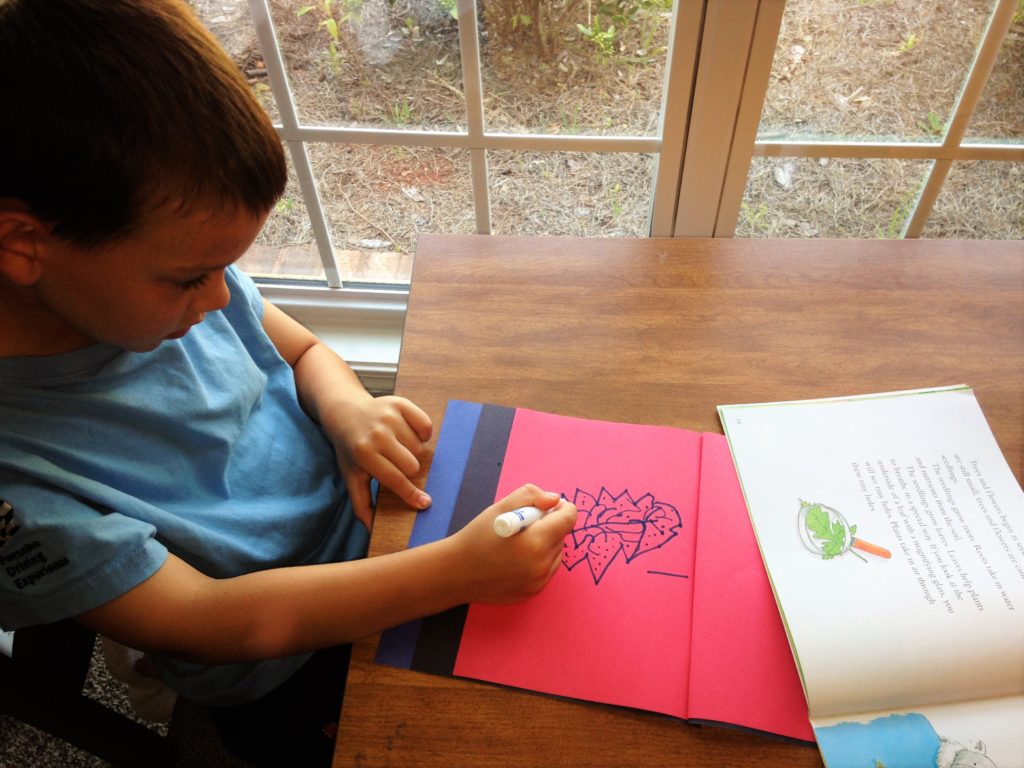
Living and Non Living Things Game
After a week of study, the boys were ready to show off their knowledge.
How to Set Up
I sent the boys off to gather up Legos that were the same color and I began to tape the game boards together. I randomly choose three of the game boards and taped them together in one long row.
I grabbed the other three and added another row, but this row was placed backward. This way, if your players are sitting opposite each other, each of them has pictures facing them.
Finally, we stacked up the cards we had sorted all week. The boys choose three each and placed them face up next to their stack of legos. We were ready to play.
Now It’s Time to Play
I don’t enjoy setting up complicated games (don’t have the time for it), so this freebie requires very little prep and doesn’t take much time to explain the rules.
The players look at the three pictures in front of them and choose one to cover up. While the players cover up a picture, they must tell if it is a living or non-living thing and tell why.
Once the players finish putting down the lego, they place that card at the bottom of the pile and draw a new card.
If they get a BUMP card, they may take off an opponent’s piece. If they draw a FREE space, they may place a lego wherever they want.
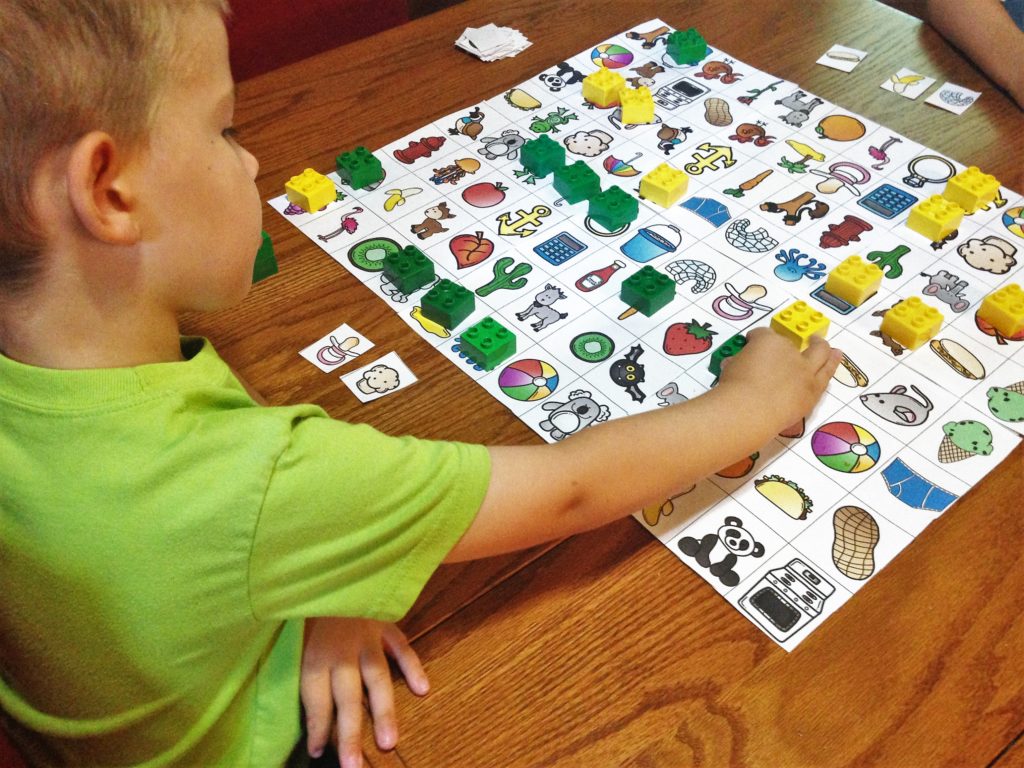
Learning about living and non-living things is an important part of any early elementary science curriculum. This simple one-week plan will help your children be able to explain to you why a cut-up kiwi is not a living thing, but why one on a vine is.
Adding this free-living vs non-living game gives you a chance to assess and spend quality time with your little kiddos.
Want other science emergent readers? Try out this Tide Pool Reader with a sensory game and other activities.
Get all 5 living vs non living activities: emergent readers, sight word game, living vs non-living puzzles, and the game HERE.
Living vs Non Living Printable
Below is the free living vs non living game printable. Click on the download button to download it to your device.
